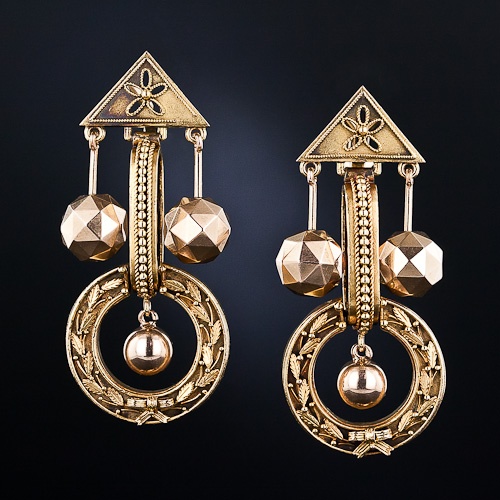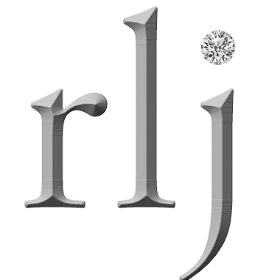Jewelry History: The Etruscan Revival Jewelry

To understand the appeal of Etruscan Revival jewelry, you have to understand the appeal of the original Etruscan jewelry unearthed in tombs just outside Rome in the early 1800s. Intricately wrought golden earrings and necklaces were meticulously ornamented with tiny gold beads and twisted wires densely applied to the surface. Nobody had seen gold worked like that since the mysterious Etruscans had carefully buried the treasures with their dead.
The science of archeology was just beginning to fire the imagination of the world and discoveries were gleefully copied. By the middle of the century Egyptian and Renaissance revival jewelry was joined by the classical Greek and Etruscan styles. The secret to that fascinating granulation found on the Etruscan hoards was claimed to have been discovered by Fortunato Pio Castellani and he produced many replicas of archeological treasure finds using ancient techniques. His son, Augusto, continued his father’s tradition and added to the techniques with engraving and chasing, producing golden pieces with both matte and shiny surfacing detailed with corded wire, filigree, and granulation as well as Greek and Roman coins. The style spread through Europe and many famous jewelers used it to produce the elaborate jewelry the Victorians demanded.
Victorian Etruscan Revival jewelry took on every form possible, from parures (a complete set of matching pieces) to individual brooches, bracelets, lockets, necklaces, earrings, and more. The Castellani family’s jewelry included intricate micro-mosaics of fantastic designs and were much copied. The industrial age brought mass production of the archeological-styled adornment into reach of the masses and the American Civil War period made the mourning jewelry of Victorian England instantly appealing to the widows and orphans of the States. Classic urns in the Etruscan style adorned lockets with the dear departed’s hair against the grieving heart.
The fad for the elaborate Etruscan look faded, revived a short time in the 1940s, then blossomed with the charm craze in the 1950s. It still can be a popular look, so if you have a mysterious piece of ornately encrusted gold or silver, bring it to a professional jeweler to find out what it is!
Related articles






Comments are closed.